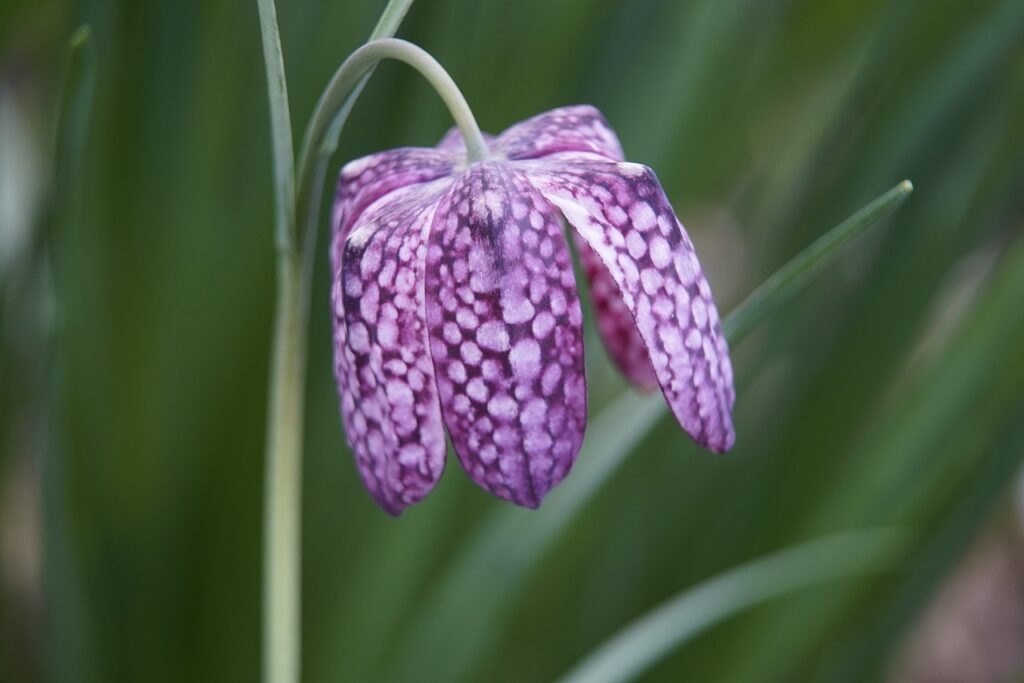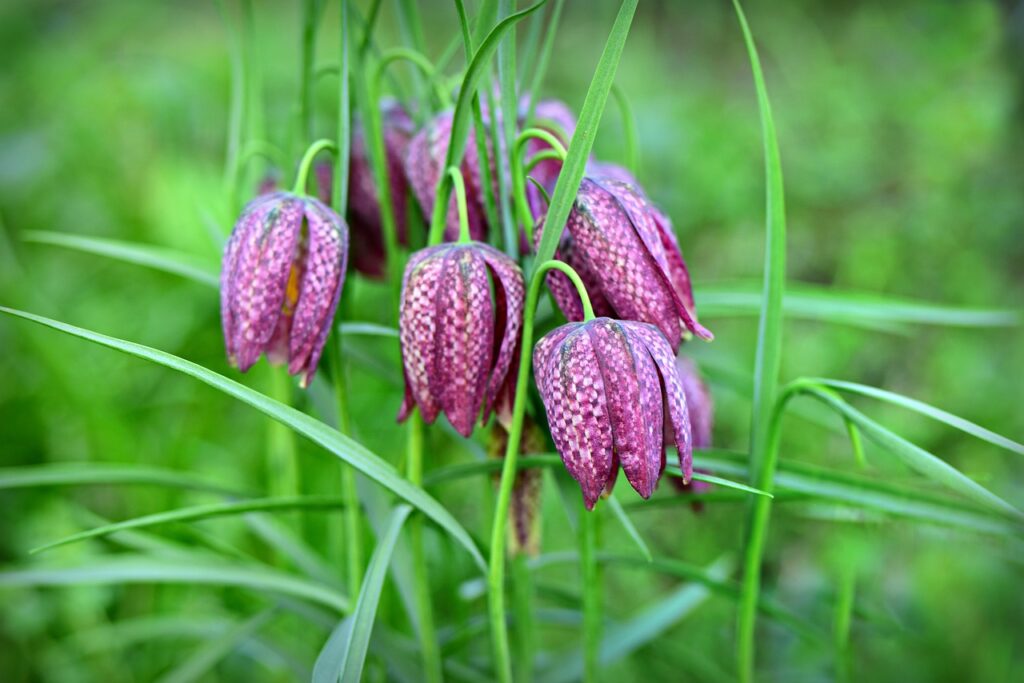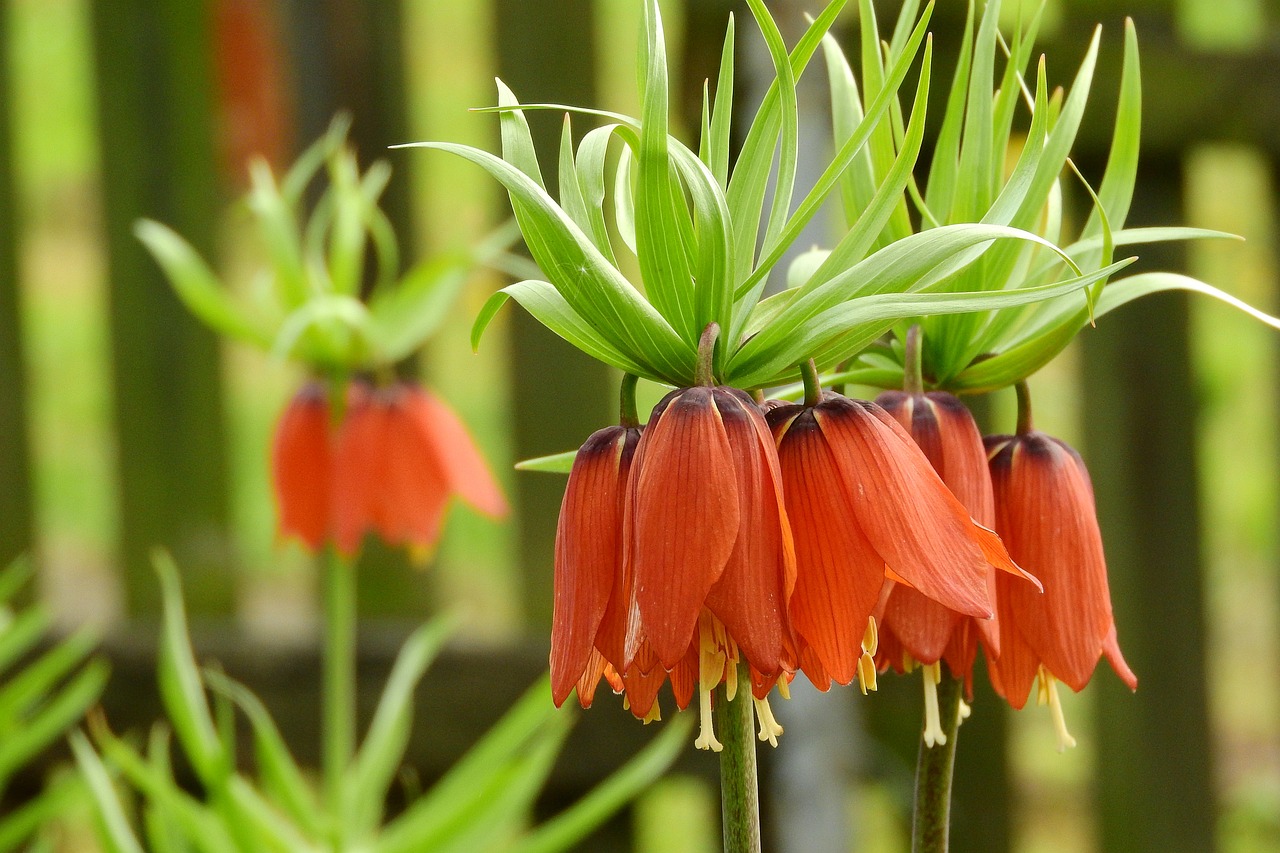Fritillaria meleagris | A Checkered Flower Celebrated by Western Poets

Fritillaria meleagris is a bulbous plant distinguished by its unique checkered petals. With its graceful and mysterious aura, this flower is popular as a striking accent in gardens.
In this article, I will explain in detail the basic information, cultural significance, history, and cultivation tips for Fritillaria meleagris.
Basic Information
- Scientific name: Fritillaria meleagris
- Family: Liliaceae
- Origin: Europe (mainly Central to Eastern regions)
- Appearance: Fritillaria meleagris grows to a height of about 20–40 cm. Its bell-shaped, downward-facing flowers display distinctive purple checkered petals, reminiscent of a chessboard. There are also white varieties, each adding unique beauty to the garden. Its slender gray-green leaves enhance the charm of the blossoms.
- Blooming season: April–May
Cultural Significance Around the World

In Europe, Fritillaria meleagris is widely known as the “Snake’s Head Fritillary,” cherished for its unusual shape and markings since ancient times.
In the United Kingdom, it is regarded as a symbol of spring and is carefully preserved in gardens and nature reserves. In certain regions, vast colonies of these flowers form iconic spring landscapes, attracting many visitors.
Fritillaria also appears in European folklore and legends, often symbolizing magic and mystery. Because its checkered pattern is associated with wisdom and strategy, it has also been linked to the culture of chess and games.
Historical Background
The name Fritillaria meleagris derives from the Latin word Fritillus, meaning “dice box,” as its petals evoke the imagery of dice or a chessboard.
This plant became widely known in Europe during the 16th century and attracted the attention of both horticultural enthusiasts and botanists.
During the 17th-century “Tulip Mania” in the Netherlands, Fritillaria was also valued as a rare ornamental plant and sometimes traded at high prices.
The English poet John Clare incorporated this flower into his poetry, portraying it as a symbol of the pastoral landscape.
Fritillaria has continued to be cherished throughout horticultural history and is now considered important for conservation efforts.
Gardening Advice

Fritillaria meleagris is relatively easy to grow and suitable for both gardens and containers. Below are some key tips:
Light
It prefers partial shade to full sun, but avoid overly hot locations. A partially shaded garden corner is ideal.
Watering
During the growing season (spring), water regularly to keep the soil moist. During dormancy (summer), reduce watering and allow the soil to remain slightly dry.
Soil
Well-drained, moderately moist soil enriched with leaf mold or compost is best.
Fertilizer
Apply diluted liquid fertilizer once or twice a month during the growing season. Over-fertilization may weaken the bulbs, so caution is necessary.
Planting
Plant bulbs in autumn, at a depth of 2–3 times their height and spaced 10–15 cm apart.
Conclusion
Fritillaria meleagris, with its distinctive patterned petals and delicate appearance, adds individuality and charm to any garden.
By incorporating this elegant flower into your spring garden, you can enjoy its unique and graceful beauty.





